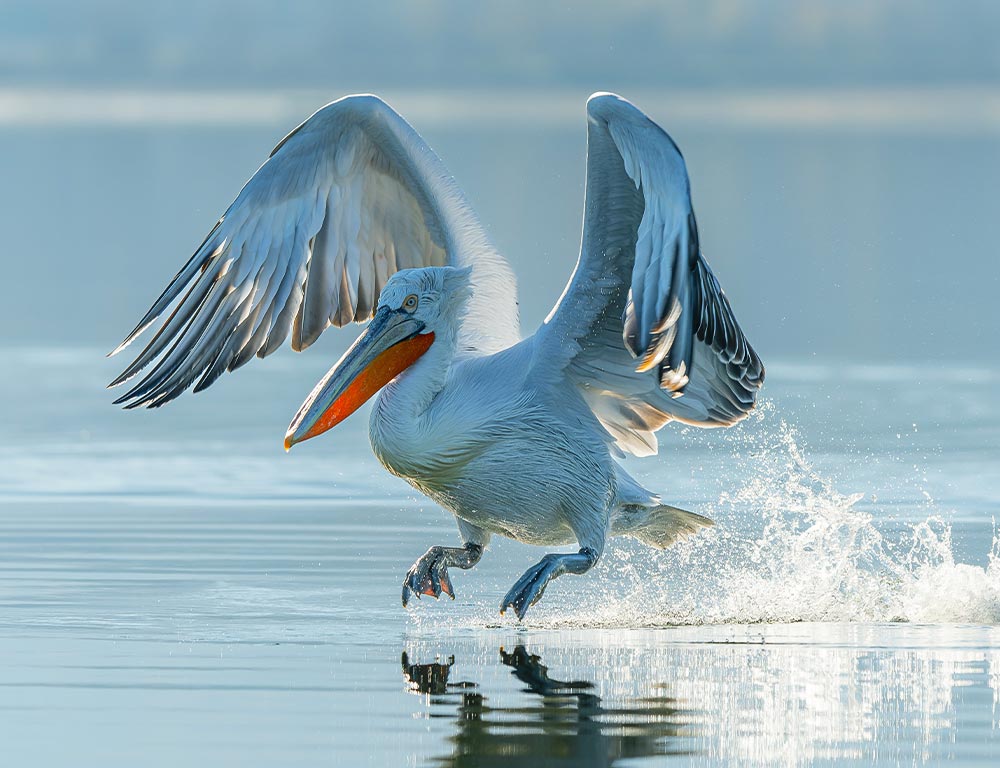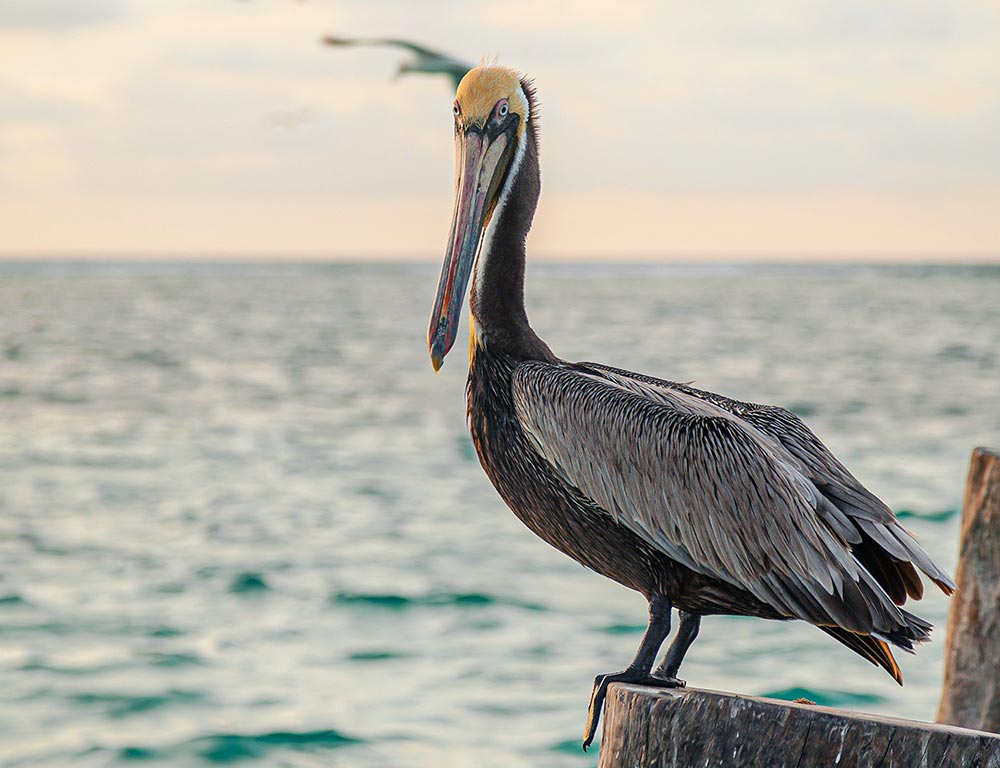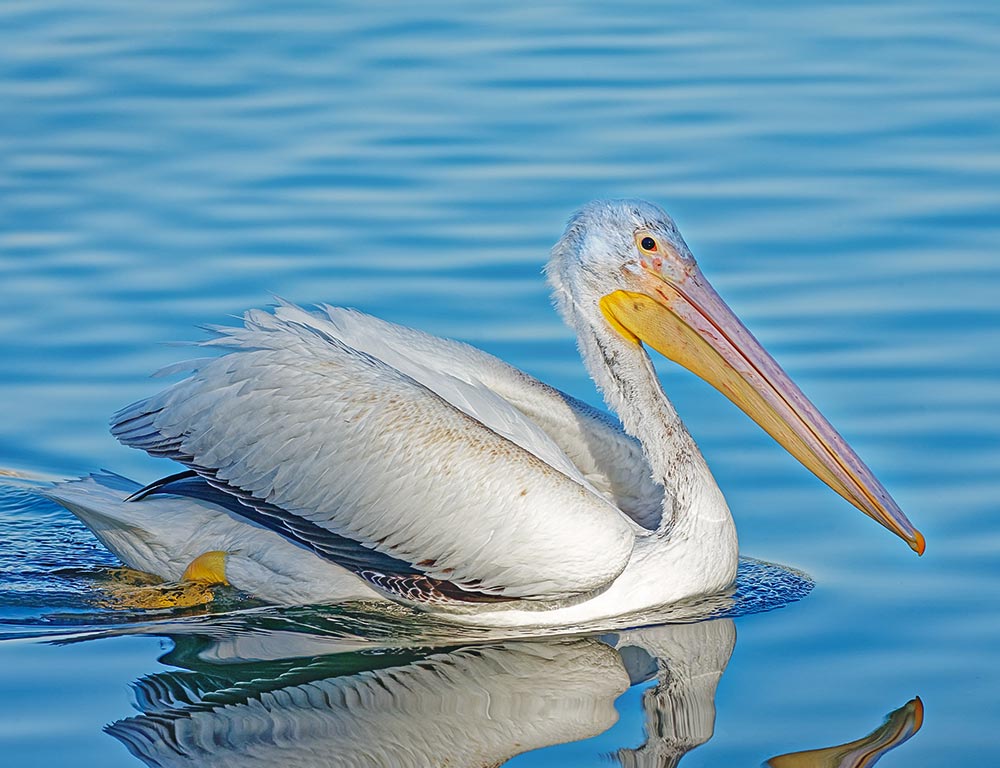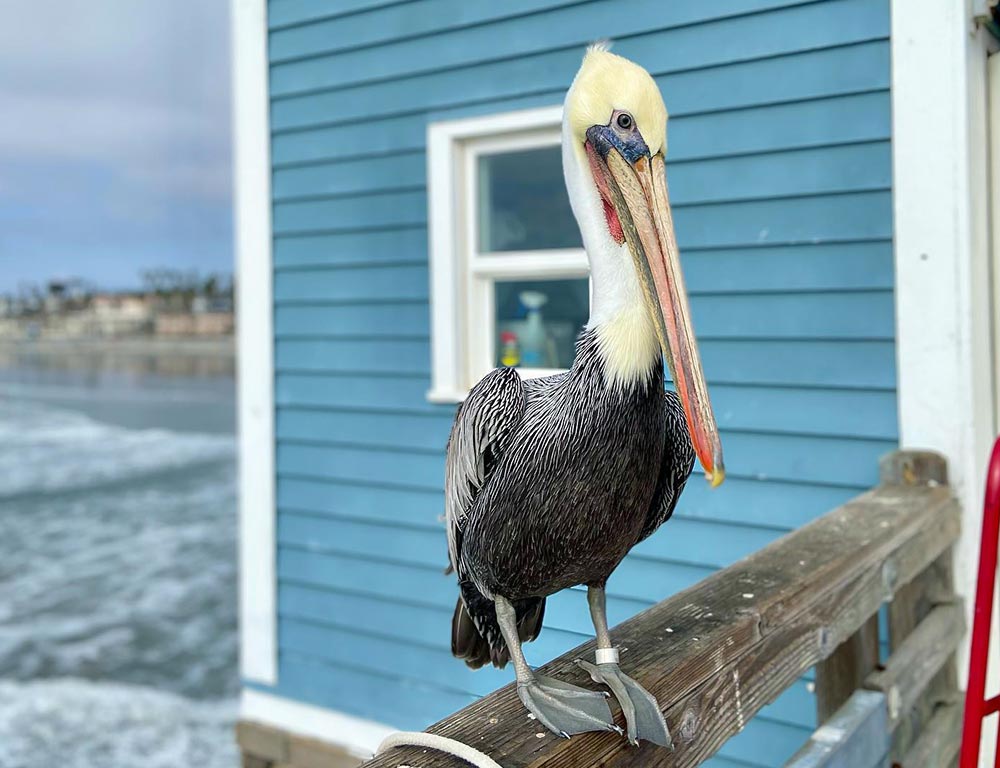Pelicans in California represent a captivating and integral facet of the state’s avian diversity.
From the rugged coastline to inland waterways, California provides a diverse habitat for two prominent species: the Brown Pelican and the American White Pelican.
These iconic birds, with their distinct characteristics and behaviours, contribute to the rich ecological tapestry of the region.
Pelicans capture the imagination of bird enthusiasts and nature lovers alike as they soar gracefully over the Pacific, plunge into coastal waters, or engage in synchronized flight over inland lakes.
This exploration delves into the lives of these magnificent avians, shedding light on their habitats, behaviours, and the ongoing initiatives dedicated to ensuring pelicans’ conservation and thriving existence in the Golden State.
Common Features of Pelicans in California

Pelicans in California, specifically the Brown Pelican and the American White Pelican, share several common features that contribute to their distinct presence in the state’s ecosystems.
Both species exhibit remarkable traits and behaviours that characterize their lives along the California coastline, estuaries, and inland waters.
Distinctive Appearance
Both Brown and American White Pelicans are large birds with long bills and a distinctive throat pouch. While Brown Pelicans sport a brown plumage, American White Pelicans are recognized for their striking white feathers.
Widespread Coastal Presence
Pelicans are commonly found along the entire California coastline, utilizing coastal cliffs, rocky shores, and sandy beaches for resting, nesting, and foraging.
Impressive Flight and Soaring Abilities
Pelicans are renowned for their soaring flight and impressive gliding. They often travel long distances, showcasing their aerial prowess over the Pacific Ocean and inland lakes.
Cooperative Foraging
Both species engage in cooperative foraging to corral and catch fish. This social behaviour is particularly evident in American White Pelicans during their synchronized wing-flapping displays.
Seasonal Migration
Pelicans in California exhibit seasonal migration patterns, with some individuals travelling significant distances to breed and find suitable feeding grounds.
Vulnerable to Environmental Threats
Both Brown and American White Pelicans face environmental challenges such as pollution, habitat loss, and changes in prey availability. Conservation efforts are crucial to ensuring their continued presence and well-being.
Understanding these common features provides insight into the shared characteristics and ecological roles of pelicans in California, highlighting the importance of conservation measures to protect these iconic birds.
Pelicans in California
California has diverse bird species, including the majestic Brown Pelican and the elegant American White Pelican. These avian residents contribute to the state’s vibrant ecosystems with their distinct characteristics.
Brown Pelican

- Scientific Name: Pelecanus occidentalis
- Population: Approximately 650,000
- Life Span: Up to 25 years
- Size: 42-54 inches
- Weight: 6-12 pounds
- Food: Primarily fish, particularly anchovies and sardines
- Wingspan: 6.5-7 feet
- Status: Least Concern (IUCN)
With its striking brown plumage and iconic long bill, the Brown Pelican is a charismatic seabird. These masterful fliers often perform impressive plunge dives from great heights to catch their prey.
Found along coastal areas, estuaries, and bays, Brown Pelicans display remarkable adaptability.
Their strong sense of community is evident in their cooperative feeding behaviours, where they work together to corral fish for easier capture.
Despite facing historical challenges like pesticide exposure, conservation efforts have helped stabilize their populations, and they continue to enchant birdwatchers and nature enthusiasts alike.
American White Pelican

- Scientific Name: Pelecanus erythrorrhynchos
- Population: Approximately 160,000
- Life Span: Up to 16 years
- Size: 50-67 inches
- Weight: 10-20 pounds
- Food: Fish, primarily non-game species
- Wingspan: 9-10 feet
- Status: Least Concern (IUCN)
The American White Pelican, distinguished by its large size and brilliant white plumage, is captivating in California’s lakes and inland waters.
Unlike their brown counterparts, these pelicans are adept at cooperative foraging, forming groups to corral fish into shallow waters for easier capture.
With an impressive wingspan and soaring flight, American White Pelicans cover vast distances during their migratory journeys.
Their characteristic breeding displays, including synchronized wing-flapping, showcase their social bonds and contribute to their overall allure in California’s avian landscape.
Despite their large populations, ongoing conservation efforts remain crucial to ensuring the continued thriving existence of these magnificent birds.
Where In California Has a Better Chance to Spot Pelicans?
In California, there are several locations where you have a better chance of spotting pelicans, particularly the Brown Pelican and the American White Pelican.
Here are some notable areas where these majestic birds are frequently observed:
Coastal Regions
Brown Pelicans are commonly found along the entire California coastline, from the rugged shores of Northern California down to the sunny beaches of Southern California.
Look for them soaring over the ocean, cruising near cliffs, or resting on offshore rocks and piers.
Estuaries and Bays
Brown and American White Pelicans are often seen in estuarine habitats and bays.
Coastal areas like San Francisco Bay, Morro Bay, and the estuaries along the Southern California coast provide rich feeding grounds for these birds.
Southern California Beaches
Southern California, including popular beaches like Venice Beach, Santa Monica, and La Jolla, is known for attracting pelicans.
These areas offer a combination of suitable roosting sites, feeding grounds, and a pleasant coastal atmosphere for observing pelican activities.
Inland Lakes and Reservoirs
American White Pelicans favour inland waters such as lakes and reservoirs.
Locations like Mono Lake, Salton Sea, and Clear Lake are known for hosting significant populations of these graceful birds during their breeding and migration seasons.
Wildlife Refuges and Nature Reserves
Pelicans often frequent wildlife refuges and nature reserves where conservation efforts are in place.
Examples include the Sacramento National Wildlife Refuge Complex and the Salton Sea National Wildlife Refuge, where birdwatchers may encounter both Brown and American White Pelicans.
Remember that the best times to spot pelicans can vary depending on the species and the region. Breeding seasons, migration periods, and the availability of food sources influence their presence.
Whether you explore the coastal areas, estuaries, or inland lakes, California’s diverse landscapes offer numerous opportunities for observing these captivating pelican species in their natural habitats.
Initiative to Help Increasing the Number of Pelicans in California

To address the conservation needs and contribute to increasing the number of pelicans in California, a comprehensive initiative has been launched, focusing on key strategies and collaborative efforts:
Habitat Protection and Restoration
The initiative prioritizes the preservation and restoration of coastal habitats, estuaries, and inland waters crucial to pelican breeding, nesting, and foraging.
This involves habitat assessments, erosion control measures, and partnerships with environmental organizations to ensure sustainable ecosystems.
Research and Monitoring Programs
Robust research and monitoring programs are implemented to gather essential data on pelican populations, migration patterns, and breeding behaviours.
This scientific knowledge informs conservation strategies, helping to adapt and refine approaches based on the latest findings.
Community Engagement and Education
The initiative strongly emphasizes community engagement and education to raise awareness about the importance of pelicans in the ecosystem.
Educational programs in schools, community workshops, and outreach events aim to foster a sense of stewardship and encourage responsible behaviours toward these avian residents.
Fishery Management and Collaboration
Collaboration with the fishing industry involves developing sustainable fishing practices to mitigate potential conflicts between pelicans and fisheries.
The initiative aims to create a harmonious balance between pelican conservation and fishing activities by establishing dialogue and implementing measures to reduce accidental bycatch.
Veterinary and Rehabilitation Support
A dedicated initiative component focuses on establishing or strengthening partnerships with wildlife rehabilitation centres and veterinary facilities.
This ensures that injured or sick pelicans receive timely and effective medical attention, aiding their recovery and eventual release back into the wild.
Policy Advocacy for Pollution Control
Advocacy efforts target policy changes to control pollution in coastal areas and inland waters.
Stricter regulations on pesticide use, oil spills, and plastic waste create a healthier environment for pelicans and other wildlife, reducing threats to their populations.
Through implementing these initiatives, the collaborative effort seeks to enhance the overall well-being of pelican populations in California, fostering a sustainable coexistence between these magnificent birds and the diverse ecosystems they inhabit.
Wrapping Up
In the dynamic tapestry of California’s ecosystems, the conservation initiatives for pelicans emerge as a beacon of hope.
Through a multi-faceted approach encompassing habitat preservation, community engagement, and research, strides are being made to secure the future of Brown and American White Pelicans.
As we navigate the delicate balance between human activities and wildlife conservation, these efforts underline the significance of collective responsibility.
By fostering awareness, embracing sustainable practices, and advocating for policy changes, we pave the way for a harmonious coexistence with these iconic birds.
The skies and shores of California, enriched by the presence of pelicans, stand a testament to the power of concerted action in safeguarding our natural heritage.